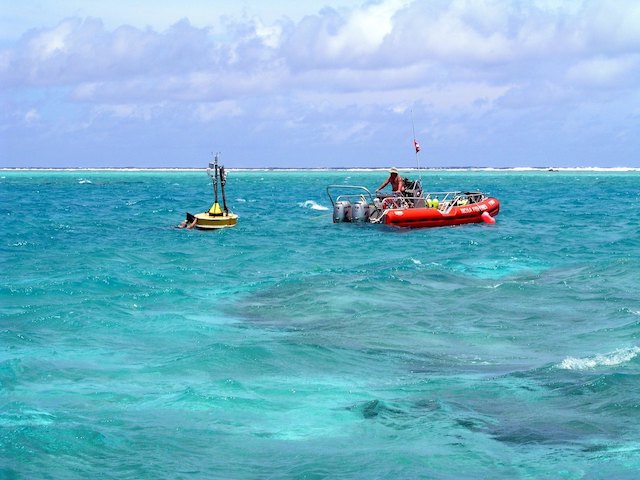10 Facts about Sanitation in American Samoa
 American Samoa refers to the seven South Pacific islands and atolls that have belonged to the U.S. since 1900. The U.S. Navy governed the islands until 1951 after the deed of cession in which the local chiefs of the Tutuila ceded the island. Today, American Samoa has an elected, nonvoting representative in the U.S. House of Representatives. Like many island nations in the pacific, sanitation is one of the major challenges that American Samoa faces every year. Here are 10 facts about sanitation in American Samoa.
American Samoa refers to the seven South Pacific islands and atolls that have belonged to the U.S. since 1900. The U.S. Navy governed the islands until 1951 after the deed of cession in which the local chiefs of the Tutuila ceded the island. Today, American Samoa has an elected, nonvoting representative in the U.S. House of Representatives. Like many island nations in the pacific, sanitation is one of the major challenges that American Samoa faces every year. Here are 10 facts about sanitation in American Samoa.
10 Facts about Sanitation in American Samoa
- Groundwater resources in American Samoa are limited. The islands that create American Samoa face the same challenges as any island nation. Underground water sources of many island nations are located near the salty seawater. In practice, this means that there’s only a limited amount of water people can draw from and limited space for people to drill wells underground. The fresh water that is accessible on the island is the source of nearly all public drinking water.
- Tap water is not drinkable in American Samoa. American Samoa has general access to improved drinking-water that is protected from outside contamination through pipes and sanitation processes. However, the water quality of local streams and rivers is still poor. Visitors are warned to drink bottled water when on the islands.
- Rapid urbanization contributed to water pollution. Previously, many villages in American Samoa relied on their local streams and rivers as a source of freshwater. Rapid urbanization, which happened from 1960 to 2004 in American Samoa contributed to the degradation of sanitation in American Samoa. The rapid urbanization and the lack of proper waste disposal polluted the natural water sources near cities. Unchecked development of the islands, such as deforestation to build plantations and housing, also alters the natural flow of local rivers and streams.
- Local pig farms contribute to water pollution. Pigs are an important part of culture and food in American Samoa. According to the EPA, there are 2,700 pig farms on Tutuila Island and many more on the six other islands of American Samoa. The majority of the pig farmers operate small-scale pig farms, consisting of anywhere from one to 20 pigs in their backyards. Many pig farmers simply use pressurized water to clean out their pig pens, which leads to polluted water seeping into local rivers and water sources.
- In July of 2003, American Samoa received full approval for the pollution control program. This approved program helped the American Samoa government to conduct facility inspections and improve environmental regulations. The American Samoa government worked with landowners to build walls and other structures to contain and direct runoff from pig waste. The program also moved more than 100 pigs away from streams and rivers. This resulted in a 91 percent decrease in average E. coli concentration in the streams.
- The Keep American Samoa Beautiful (KASB) program is reducing pollution. KASB encourages the general public to help improve sanitation in American Samoa. There are multiple programs that encourage the people of American Samoa to reduce littering. This kind of program is important for American Samoa since litter, garbage and pollution attract mosquitoes. Diseases such as dengue fever and elephantiasis are some of the diseases that constantly plague the people of American Samoa.
- In 2016, the United States EPA awarded $8.9 million to American Samoa. The government of American Samoa will use this awarded money to ensure access to safe drinking water and to improve the general sanitation of American Samoa. Some of the projects include connecting new wells to drinking water systems, a new water storage tank at Upper Pago Pago and a sewer line extension to Aua village.
- ASEPA faces a few challenges in future plans for the quality and supply of fresh water. Lack of data prior to 2000 poses a challenge for improving the quality of water and sanitation in American Samoa. First, the lack of data makes it difficult to identify historical trends. Second, it makes anticipating possible water quality problems in the future difficult. This is more important than ever because of climate change.
- Cyclones and hurricanes are a major threat to sanitation in American Samoa. American Samoa often faces tropical cyclones and hurricanes. In 2018, cyclone Gita left a trail of devastation in American Samoa. Cyclones can be a major source of pollution in local water supplies for a variety of reasons. The rain from hurricanes and cyclones often contains undrinkable salt water. Flooding caused by events can pick up chemicals and other hazards that can contaminate the local water sources.
- The tuna industry is contributing to water pollution. American Samoa is asking tuna cannery industries in American Samoa to contribute to conserving water. Tuna canneries are one of the biggest industries in American Samoa. As a result, there were elevated phosphorous levels in local watersheds. The Pacific Regional Integrated Sciences and Assessments Program recommends the tuna canning industries monitor and improve water usage.
These 10 facts about sanitation in American Samoa reveal many challenges. However, it is clear that there are efforts to further improve the conditions in American Samoa. The U.S. government awarding funds for projects that improve water quality. Furthermore, the American Samoa government is also collecting environmental data to prepare themselves for potential challenges in the future. With these improvements, a cleaner American Samoa awaits for all of its inhabitants.
– YongJin Yi
Photo: Flickr
